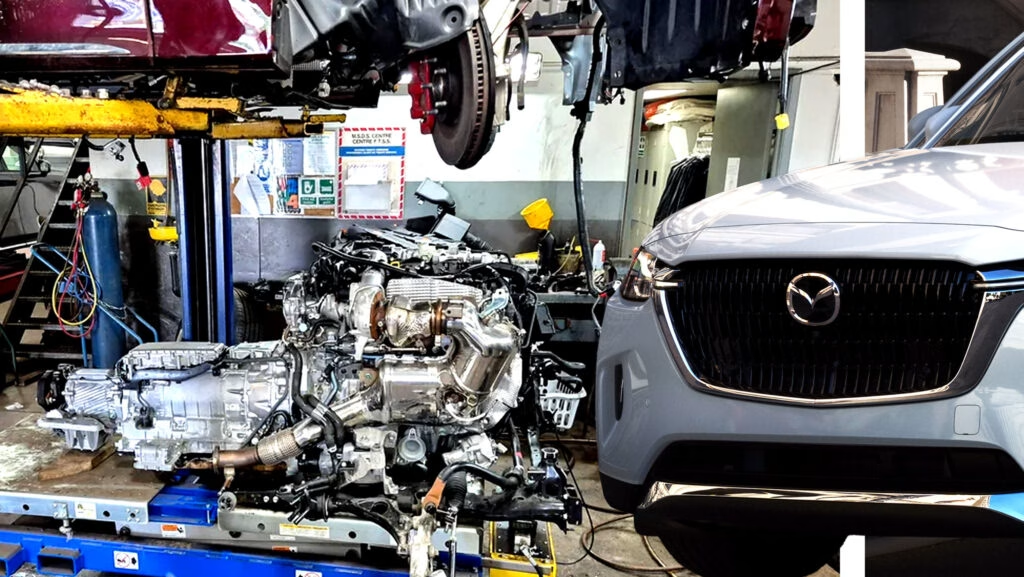Why Did a Simple Oil Change on a Mazda CX-90 Turn Into a $6,000 Disaster?
Ever looked at a $120 oil change and thought, “I can do that myself and save a bundle”? You’re not alone. Plenty of car owners roll up their sleeves to tackle basic maintenance, hoping to pocket some extra cash. But sometimes, what looks like a straightforward job can spiral into a wallet-busting ordeal. That’s exactly what happened to one Mazda CX-90 owner in Canada, who set out to save a few bucks and ended up with a repair bill that could fund a decent vacation.
What Went Wrong During This DIY Oil Change?
The owner’s plan was simple: skip the dealership, jack up the CX-90, and swap the oil at home. But as soon as the car was lifted, things took a turn. The oil pan—usually a humble, unassuming part—cracked. For most vehicles, replacing a damaged oil pan is a minor inconvenience. Not so with the Mazda CX-90.
Here’s the kicker: the oil pan on this model isn’t just a thin piece of metal holding your engine’s lifeblood. It’s a stressed structural member, meaning it actually helps hold the car together. Crack it, and you’re not just swapping out a pan—you’re opening a can of worms that involves major surgery.
Why Is the Mazda CX-90 Oil Pan So Complicated (and Expensive) to Replace?
Let’s break down why this repair is such a beast. Unlike most cars, the CX-90’s oil pan is integrated into the vehicle’s structure. The front axle runs right through it, and it adds rigidity to the chassis. That means you can’t just unbolt it and slap on a new one.
According to dealership service techs and repair databases, replacing this oil pan requires removing both the engine and the gearbox. Depending on who you ask, the job is quoted at anywhere from 12 to 30 hours of labor. Even at the lower end, that’s a full day and a half in the shop. Add in the cost of the new part, fluids, and all that labor, and suddenly your $120 DIY project has ballooned into a $6,000 headache.
How Common Are Costly Surprises Like This With Modern Cars?
It’s not just Mazda. As cars get more advanced, manufacturers are integrating components in ways that make them lighter, stronger, and safer—but also much trickier to repair. Structural oil pans, hidden filters, and complex electronics are becoming the norm. A 2023 survey by AAA found that nearly two-thirds of drivers underestimate the complexity of modern vehicle repairs, and almost half have experienced a DIY job that went sideways.
Anecdotes like this one are popping up more often on forums and social media. Owners of newer vehicles, especially those with unique engineering, are finding that what used to be a Saturday afternoon project now requires specialized tools, technical know-how, and sometimes even factory training.
Is DIY Maintenance Still Worth It for Modern Vehicles?
Here’s the million-dollar question: should you still try to do your own maintenance? The answer isn’t black and white. For older cars, or for tasks like changing wiper blades or swapping out an air filter, DIY can still make sense. But for newer models—especially those with components that double as structural parts—it pays to do your homework.
Check your owner’s manual. Look up service bulletins. And if you’re not 100% sure what you’re getting into, call your dealership or a trusted mechanic for advice. Sometimes, that $120 service bill is actually the bargain of the century.
What Can You Do to Avoid a Costly DIY Mistake?
A few practical tips can save you from a similar fate:
– Research before you wrench. Look up repair guides and watch reputable how-to videos for your specific make and model.
– Use the right tools. Improper jacks or stands can cause damage before you even start the job.
– Know your limits. If a repair involves removing major components or specialized equipment, it’s usually best left to the pros.
– Don’t be afraid to ask. Online forums, local mechanics, and even dealership service advisors can provide valuable insights.
The big takeaway? DIY car care isn’t about perfection—it’s about smarter adjustments. Start with one change this week, and you’ll likely spot the difference by month’s end. Sometimes, the smartest move is knowing when to put down the wrench and pick up the phone.

